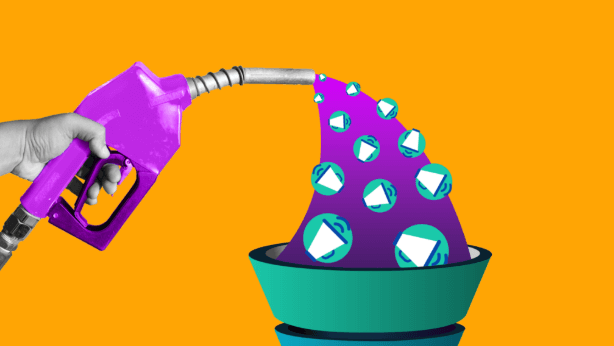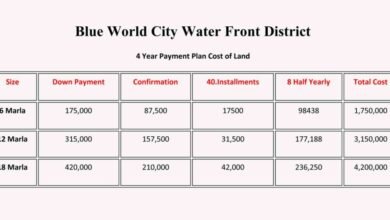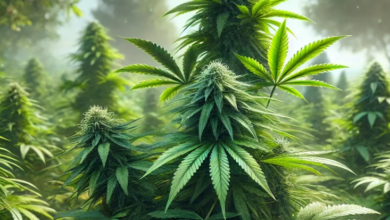Sales Funnel vs Marketing Funnel: Understanding the Difference

In the intricate ecosystem of customer acquisition, funnels serve as the strategic blueprints guiding prospects from curiosity to commitment. Yet, the terms “sales funnel” and “marketing funnel” are often used interchangeably, creating confusion about their distinct roles. The debate of sales funnel vs marketing funnel hinges on their scope, focus, and objectives within the buyer’s journey. While both aim to drive business growth, they serve different functions, requiring unique strategies and metrics. This article dissects the differences, offering clarity to help businesses align their efforts effectively.
Defining the Core Concepts
A marketing funnel is a broad framework that encompasses the entire process of attracting and engaging prospects, primarily focusing on the early stages of the buyer’s journey—awareness and interest. It’s about building brand visibility and nurturing curiosity. A B2C retailer might use social media ads to spark awareness, while a B2B consultancy publishes whitepapers to educate prospects.
A sales funnel, by contrast, is narrower, zeroing in on the later stages—decision and retention—where prospects are converted into customers and retained as loyal advocates. It emphasizes closing deals and maximizing revenue. A B2C ecommerce brand might offer discounts to cart abandoners, while a B2B vendor delivers tailored proposals to secure contracts. Understanding the sales funnel vs marketing funnel distinction is critical to allocating resources and aligning team efforts.
Scope and Stages of Each Funnel
The marketing funnel casts a wide net, covering the top and middle of the buyer’s journey. Its stages include:
Awareness: Generating visibility through ads, content, or partnerships.
Interest: Nurturing engagement with educational resources like blogs or webinars.
A fitness brand, for example, might use Instagram Reels to attract attention and follow up with workout guides to build interest. The focus is on lead generation and qualification, preparing prospects for sales interactions.
The sales funnel, however, operates at the bottom of the journey, with stages like:
Decision: Converting leads through incentives, demos, or proposals.
Retention: Fostering loyalty with post-purchase support or loyalty programs.
A SaaS provider might offer a free trial to close a deal, then provide onboarding to ensure client success. The sales funnel vs marketing funnel divide lies in their scope—marketing builds the pipeline, while sales closes and retains.
Objectives and Focus Areas
The marketing funnel’s primary objective is to create demand and educate prospects. It’s about establishing trust and positioning the brand as a solution. A B2B cybersecurity firm might host webinars on data protection to attract IT leaders, aiming to generate qualified leads. Metrics like impressions, click-through rates (CTR), and lead volume gauge success, reflecting the funnel’s focus on reach and engagement.
The sales funnel, conversely, is laser-focused on conversions and revenue. Its objective is to transform qualified leads into paying customers and maximize lifetime value. A B2C retailer might use retargeting emails to recover abandoned carts, while a B2B consultancy delivers customized pitches to seal deals. Conversion rate, cost-per-conversion, and customer lifetime value (CLV) are key metrics, highlighting the funnel’s emphasis on tangible outcomes. This distinction drives the strategic approach to each funnel.
Team Roles and Collaboration
The sales funnel vs marketing funnel dynamic also shapes team responsibilities. Marketing teams own the marketing funnel, driving awareness and nurturing leads. They craft campaigns, manage content, and optimize lead generation. A B2C brand’s marketing team might run TikTok ads, while a B2B team produces industry reports, both aiming to fill the pipeline with prospects.
Sales teams dominate the sales funnel, focusing on closing deals and retaining customers. They engage high-intent leads with demos, negotiations, or follow-ups. A B2B sales rep might present a tailored solution to a prospect, while a B2C sales team ensures smooth checkouts. Collaboration is critical—marketing must deliver qualified leads, and sales must provide feedback to refine targeting. Misalignment, like marketing generating low-quality leads, can stall conversions, underscoring the need for unified goals.
Tools and Technologies Employed
Technology underpins both funnels, but their applications differ. Marketing funnels rely on tools for reach and engagement. Programmatic advertising platforms like The Trade Desk enable precise ad targeting, while content management systems like WordPress support blogs or landing pages. A B2C retailer might use Klaviyo to automate welcome emails, nurturing early-stage leads.
Sales funnels leverage CRM systems like Salesforce or Zoho to track high-intent leads and manage deals. Automation tools deliver decision-stage content, such as contract reminders or loyalty offers. A B2B vendor might use DocuSign to streamline e-signatures, speeding up closures. AI-driven lead scoring, common in sales funnels, prioritizes prospects likely to convert. While both funnels use automation, marketing emphasizes scale, and sales focuses on precision, reflecting their distinct roles in the sales funnel vs marketing funnel equation.
Metrics and Measurement Approaches
Metrics further differentiate the two funnels. Marketing funnel metrics focus on reach and engagement:
- Impressions and CTR for awareness campaigns.
- Email open rates and content interactions for interest.
A B2B consultancy might track webinar registrations to gauge interest, aiming for a 30% attendance rate. These metrics assess pipeline health, ensuring a steady flow of leads.
Sales funnel metrics prioritize conversions and retention:
- Conversion rate and time-to-close for decision.
- Retention rate and CLV for loyalty.
A B2C retailer might aim for a 10% cart abandonment recovery rate, while a B2B firm tracks a 25% proposal-to-contract rate. These metrics reflect revenue impact, guiding sales strategies. The sales funnel vs marketing funnel divide in measurement ensures each stage is evaluated against its specific goals.
Strategic Integration for Optimal Results
While distinct, sales and marketing funnels are interdependent, and integration maximizes impact. The marketing funnel feeds the sales funnel with qualified leads, while sales feedback refines marketing targeting. A B2C brand might use marketing’s social ads to attract leads, then sales’ retargeting to convert them. A B2B firm could leverage marketing’s whitepapers to generate leads, followed by sales’ demos to close deals.
Cross-functional alignment, supported by shared dashboards, ensures cohesion. Marketing can share engagement data to inform sales pitches, while sales provides insights on lead quality. Unified metrics, like lead-to-customer conversion rate, bridge the gap, aligning both funnels toward revenue goals. This integration ensures the sales funnel vs marketing funnel dynamic is a collaborative strength, not a point of friction.
Adapting to Modern Buyer Behaviors
Both funnels must evolve with changing buyer expectations. Social commerce, where discovery occurs on platforms like Instagram, shapes marketing funnels, requiring shoppable posts to capture leads. A B2C retailer might optimize its marketing funnel for in-app engagement. Conversational commerce, via chatbots, influences sales funnels, enabling instant deal closures—a B2B consultancy could finalize contracts via messaging apps.
Values-driven buying also impacts both. Marketing funnels highlighting sustainability attract conscious prospects, while sales funnels emphasizing ethical practices build loyalty. AI-driven personalization tailors interactions across both funnels, enhancing relevance. By adapting to trends, businesses ensure both funnels remain effective, addressing modern buyer priorities with agility.
Aligning Funnels for Business Success
The sales funnel vs marketing funnel distinction clarifies their roles while highlighting their interdependence. Marketing funnels build the pipeline, creating demand and trust, while sales funnels drive conversions and loyalty, delivering revenue. Distinct objectives, team roles, tools, and metrics shape each, but integration ensures a seamless buyer journey. Data-driven collaboration and trend awareness keep both funnels relevant, maximizing impact. In a competitive market, understanding and aligning these funnels is not just strategic—it’s the key to transforming prospects into loyal customers and achieving sustainable growth.





